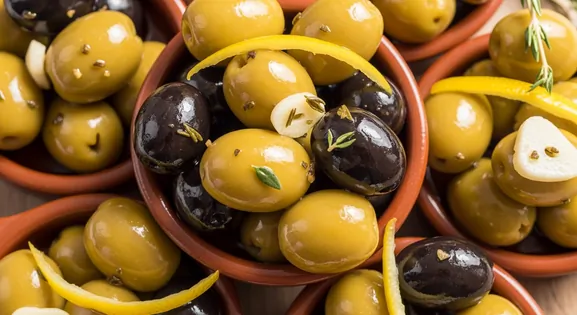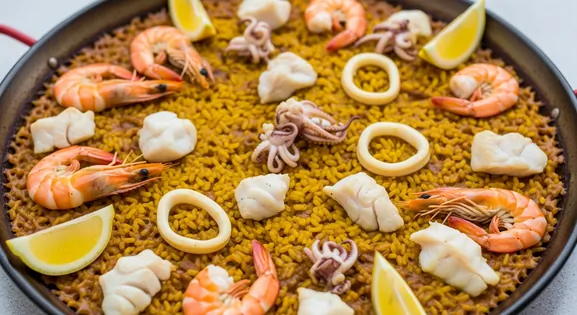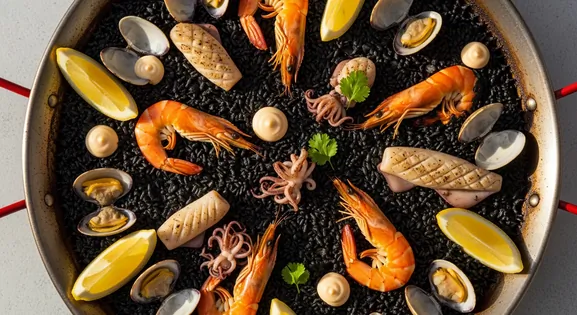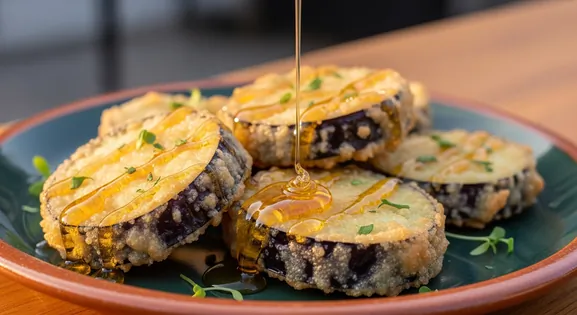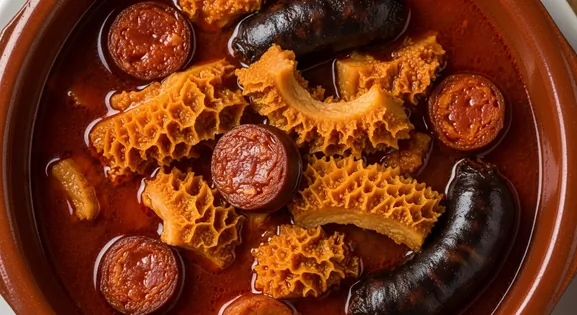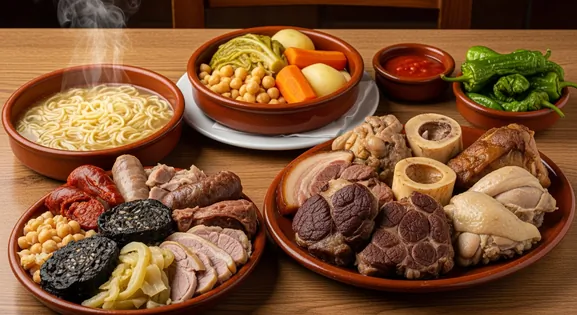All-i-pebre in Spain: A Complete Food Lover's Guide
All-i-pebre
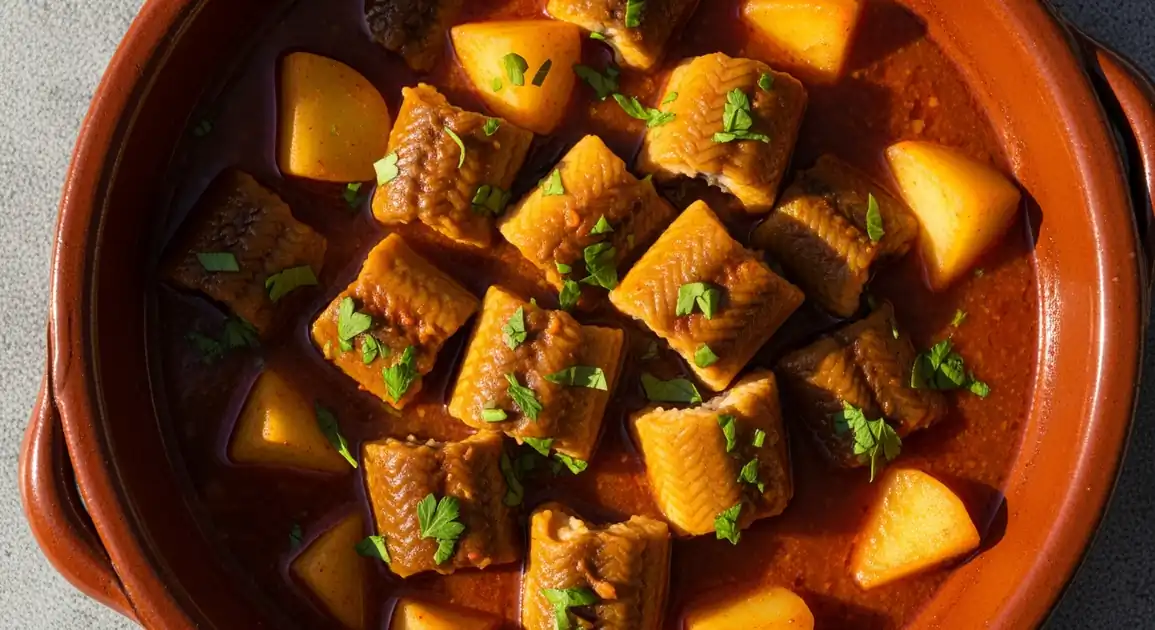
A Culinary Snapshot
All-i-pebre is a traditional Valencian dish featuring chunks of freshwater eel cooked in a rich, aromatic sauce of olive oil, garlic, paprika, and sometimes almonds or hazelnuts. Often including potatoes and served with rustic bread, this emblematic dish originated in the fishing villages surrounding Albufera Lake. Its name—meaning 'garlic and pepper' in Valencian—highlights the key ingredients that give the dish its distinctive reddish-brown color and robust flavor profile.
A Traveler's Guide to Authenticity
What to Look For
-
Eel that is white to slightly pinkish when cooked
Properly cooked eel should have firm, opaque flesh. If it appears translucent, it may be undercooked.
-
Sauce with a rich, homogeneous texture
A good All-i-pebre sauce should be thick enough to coat the back of a spoon, indicating proper reduction and cooking time.
-
Dish served piping hot in a traditional clay cazuela
Ensures proper cooking temperature and maintains the traditional serving style that keeps the dish hot throughout the meal.
-
Restaurant displays knowledge about the source of their eel
Quality establishments will know if their eel is from Albufera, other Spanish waters, or farm-raised, indicating attention to ingredients.
What to avoid
-
Very fishy smell or gray-colored eel
Fresh eel should not have an overpowering fishy odor. Gray coloration could indicate old or poorly handled eel.
-
Watery or separated sauce
Indicates improper cooking technique or rushed preparation.
-
Undercooked or rubbery eel
Eel must be thoroughly cooked for both safety and texture reasons. It should flake easily when pressed with a fork.
-
Pre-prepared All-i-pebre that's merely reheated
The best versions are made to order or at least freshly prepared that day. Ask if in doubt.
How to Order All-i-pebre
The Perfect Accompaniments
Crusty Bread
Side Dish
Essential for soaking up the rich, flavorful sauce, ensuring no drop of the delicious All-i-pebre goes to waste.
Valencian White Wine
Beverage
A crisp, dry white wine from the Utiel-Requena or Alicante regions complements the richness of the eel and the intensity of the sauce.
Explore All-i-pebre in Detail: City Guides
Discover where to find the best All-i-pebre and learn local tips in these cities:
From Humble Origins: A Brief History
All-i-pebre originated in the fishing communities surrounding Valencia's Albufera Lake, where freshwater eels were abundant. Dating back several centuries, it was a practical way for fishermen to prepare their catch using readily available ingredients. The dish represents the region's connection to both the sea and the fertile land around it. While traditionally a humble fisherman's meal, All-i-pebre has evolved into one of Valencia's most celebrated culinary specialties, proudly served in restaurants throughout the region as a symbol of Valencian cultural identity.
Deconstructing All-i-pebre: Ingredients and Method
The traditional preparation begins with cleaning and cutting freshwater eel into segments. Garlic is sautéed in olive oil until golden, then sweet and hot paprika are added to create the base of the sauce. Some recipes include toasted almonds or hazelnuts ground into a paste with bread for thickening. The eel is added and briefly sautéed before water or fish stock is introduced. Peeled potatoes are added and everything simmers together until the potatoes are tender and the eel is thoroughly cooked. Fresh herbs like parsley are added just before serving. For optimal quality, ensure the eel is fresh and thoroughly cooked through.
Key Ingredients of All-i-pebre
Freshwater Eel (Anguila)
The defining ingredient, traditionally sourced from freshwater lakes, provides a rich, meaty texture and is crucial for the dish's authentic flavor. Its firm flesh readily absorbs the aromatic sauce, making it the star of All-i-pebre.
Quality indicator: Look for firm, clean-smelling eel with no discoloration.
Garlic (Ajo)
A cornerstone of the dish, used generously to build the aromatic base. It's typically sautéed until golden, releasing its pungent and sweet notes.
Quality indicator: The garlic should be fresh, firm, and aromatic, not sprouted or soft.
Paprika (Pimentón)
Both sweet (dulce) and hot (picante) paprika are used, giving the sauce its characteristic reddish-brown color and smoky, slightly spicy depth.
Quality indicator: High-quality paprika should have a vibrant color and a rich, smoky aroma.
Local All-i-pebre Variations in Spain
Traditional All-i-pebre with Eel
The classic version made with freshwater eel from Albufera Lake, featuring garlic, paprika, olive oil, and potatoes in a rich sauce.
All-i-pebre with Monkfish
A popular coastal variation using monkfish instead of eel, often preferred by those who find eel too rich or aren't accustomed to it.
All-i-pebre with Cod
A variation using desalted cod, creating a different texture while maintaining the traditional sauce.
Spicy All-i-pebre
Features additional hot paprika or chili peppers for those who prefer a spicier dish.
All-i-pebre with Cuttlefish
A variation using cuttlefish instead of eel, popular in coastal areas south of Valencia.
Dietary Information
Dietary Information
Important Note for Travelers: Your safety is our priority. Below are the common allergens associated with the traditional preparation of this dish. However, recipes and ingredients can vary significantly between establishments. Always confirm all ingredients directly with the food vendor before ordering, especially if you have a severe allergy.
Potential Allergens
Dietary Suitability
Frequently Asked Questions about All-i-pebre
How do I order All-i-pebre?
When ordering, look for 'All-i-pebre' on the menu, often under 'arroces' or 'platos de cuchara'. You can ask if it's made with fresh eel. It's typically a main course, served in a clay pot, and meant to be shared or enjoyed individually with plenty of bread.
What indicates a high-quality All-i-pebre?
Look for a rich, reddish-brown sauce that is thick and homogeneous, not watery or separated. The eel should be tender, opaque, and flake easily, not rubbery or translucent. It should be served piping hot in a traditional cazuela, indicating fresh preparation.
Is All-i-pebre a good choice for travelers?
All-i-pebre is generally a smart choice when prepared at reputable establishments. As it contains eel, which requires thorough cooking, choose restaurants with good hygiene and high turnover. The dish should be served piping hot, indicating proper preparation. Traditional places often have extensive experience preparing this dish well.
What are common variations of All-i-pebre?
While traditionally made with eel, variations use other seafood like monkfish, cod, or cuttlefish. Some recipes add vegetables or vary the spice level. However, purists in the Albufera region insist authentic All-i-pebre must use freshwater eel from the lake.
Is All-i-pebre suitable for vegetarians or vegans?
No, traditional All-i-pebre is not suitable for vegetarians or vegans as its main ingredient is eel, and the sauce often contains fish stock. The dish's flavor profile is specifically designed to complement the eel, making substitution difficult while maintaining authenticity.
When is the best time to try All-i-pebre?
It's available year-round, but many locals prefer it during cooler months (October to April) for its warming qualities. For the most authentic experience, visit fishing villages around Albufera Lake, especially El Palmar. Autumn is traditionally considered the best season for fresh eel.
Expert How-To Guides about All-i-pebre
How to Spot an Authentic All-i-pebre Restaurant
Discover how to identify establishments serving the most traditional and high-quality All-i-pebre across Spain with these essential tips.
- Look for restaurants in or near the dish's region of origin, particularly those specializing in regional cuisine.
- Check if 'All-i-pebre tradicional' is featured prominently on the menu, not as an afterthought.
- Inquire if they use freshwater eel from traditional sources (though farm-raised is now common and acceptable).
- The sauce should be rich and reddish-brown, not pale or watery.
- A good sign is if locals are ordering the dish or if the restaurant specializes in the food item.
- Traditional establishments will likely serve it in a cazuela (earthenware dish) with bread on the side.
How to Properly Eat All-i-pebre
Learn to savor this traditional Spanish dish like a local, ensuring you get the most out of its rich flavors and cultural experience.
- Wait until the dish cools slightly—it's typically served very hot in its clay dish.
- Use bread to soak up the rich sauce (this is called 'fer suc' in Valencian).
- Try a piece of eel with potato and sauce together for the complete flavor experience.
- Pair with a crisp, dry local white wine that complements the richness of the eel and the intensity of the sauce.
- It's acceptable to ask for extra bread if you run out—the sauce is considered a delicacy.
- Take your time—this isn't fast food but a dish meant to be savored slowly.
How to Identify Quality Eel in All-i-pebre
The quality of eel makes a significant difference in this traditional dish.
- Good quality eel should be tender and flake easily with a fork.
- The flesh should be white to slightly pinkish, never gray or overly dark.
- There shouldn't be an excessive amount of small bones (though some are normal).
- The eel should be cut into manageable pieces, typically 2-3 inches long.
- Quality eel won't have a strong fishy smell, but rather a clean, slightly sweet aroma.
- The meat should absorb the flavors of the sauce while still maintaining its own distinctive taste.
Our Commitment to Quality
At Tasteplorers, our mission is to provide the most accurate and useful travel information in the world. To achieve this, all content on this site is created through our unique editorial framework. We utilize leading AI research tools, guided by our proprietary prompts, and a multi-stage validation process. This entire system is overseen by our editorial team to ensure everything we publish meets our high standards for accuracy, cultural nuance, and practical value for travelers.
Learn more about our Editorial Process and our Mission.
Countries
Explore regions
Europe
Discover Europe's diverse culinary landscape, from Mediterranean flavors to hearty Alpine fare. Learn to navigate markets, decode menus, and eat like a local.
Latin America & Caribbean
Discover the vibrant cuisines of Latin America & the Caribbean. Our expert guide covers everything from Mexican street food to Peruvian ceviche and market tips.
Oceania
Explore Oceania's diverse food scene. Learn about Polynesian earth ovens, Fijian feasts, and the vibrant café culture of Australia and New Zealand.
Southeast Asia
Explore Southeast Asia's diverse food cultures from Thailand to Vietnam. Get expert tips on navigating spice levels, choosing quality vendors, and understanding the rich traditions of the region.
